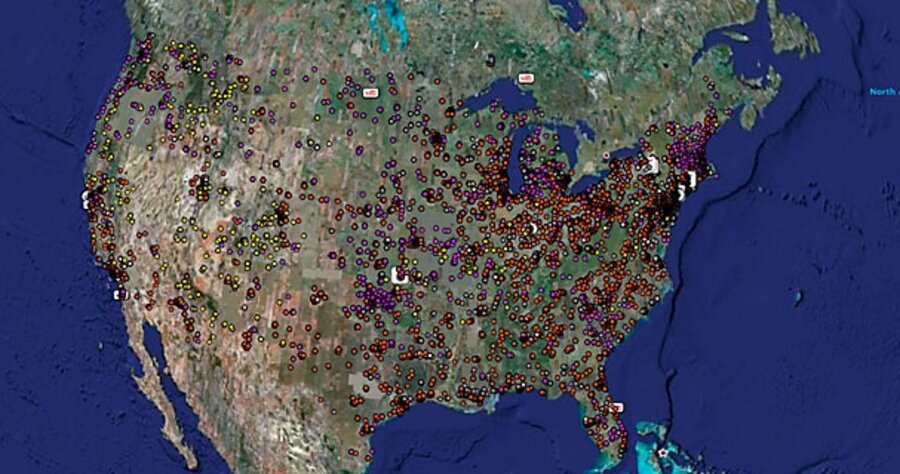EPA proposes using contaminated land for renewable energy
Loading...
The thing about renewable-energy projects is that we don't want to live near them, but we don't want to put them on pristine land, either.
This would seem to eliminate all the options, but the Environmental Protection Agency has come up with an alternative: What if we put our big ugly wind farms, solar arrays, and bioreactors on land that we've already messed up?
Working with the Department of Energy’s National Renewable Energy Laboratory, the EPA has compiled a database of brownfields, hazardous waste dumps, and abandoned mines in all 50 states that could provide homes for renewable energy projects. The agency then created a nifty Google Earth layer that anyone can download and fiddle around with.
Building such projects on contaminated land has many advantages, says the EPA. The land is cheap. Many sites already have existing power lines and roads leading to them (artifacts of the industrial activity that wrecked the land in the first place). And they offer good jobs in communities that are most likely economically depressed (because that industrial activity has moved elsewhere, and because people who can afford not to generally don't live near hazardous waste sites).
There's no shortage of contaminated sites. The EPA estimates that there are about 480,000 in the United States, adding up to almost 15 million acres of contaminated properties – a little more than 0.5 percent of the country's total land area.
But is the land safe for workers?
That's the question I had, and I couldn't find any answers on the EPA's site, or in any other news story or blog post I read on the topic, except for this brief item in Occupational Health and Safety Magazine. Here's what it had to say:
The EPA states that appropriate steps to address the contamination at these properties will vary from site to site, depending on the nature of the contamination and intended reuse. According to the agency, the properties have varying levels of historic contamination. Contamination at some of the properties has already been addressed, while the level of contamination at others is still under investigation.
Which is to say, not much.
But, reading between the lines, it looks as though the EPA has to find a middle ground between reclaiming contaminated land to the point where it won't sicken those who would be building and operating these renewable-energy facilities, but not cleaning it up enough so that it becomes attractive for developers who want to build homes and businesses. Either that, or make the workers wear hazmat suits.





